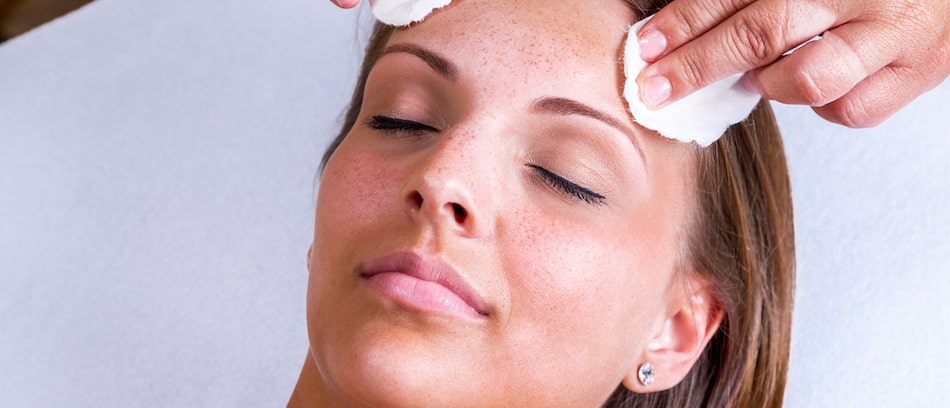
We all want clearer, smoother, younger-looking skin. It’s why skincare is a multibillion dollar global industry, with some experts estimating that the average person spends as much as $15,000 on skincare over the course of their lifetime. And as wild as that may sound, it’s quite understandable. With the continued advancements in medical care, we’re living longer than ever before, and therefore, it’s only natural that we would want to take care of ourselves and our appearance with a bit more gusto than we did in the past.
That said, there’s only so much “bang for our buck” we can get with toners and serums and lotions alone. As great as these products are, they do have their limitations. So what can you do when you feel like you’ve hit a plateau when it comes to maintaining youthful, glowing skin? The answer could very well be a chemical peel.
In the simplest of terms, a chemical peel is exactly what it sounds like: A chemical solution that’s applied to your skin with the intention of peeling off the outermost layer of skin. (Or multiple layers, depending on the treatment. More on that below.) With these outermost layers of skin removed, the layers of skin underneath them then make their way to the surface, revealing skin that is smoother, more youthful, and with fewer fine lines and wrinkles. It’s a skincare approach that lives by the motto of “Out with the old and in with the new” - something that most topical products simply cannot do.
Chemical peels have been proven to be effective to address nearly any skin condition one is facing, including everything from acne and skin discoloration, to scars and wrinkles. These peels serve as a “reset”, of sorts, for your skin, and can be the perfect periodic addition to your skincare regimen to give you that extra youthful glow you desire.
There are three different types of chemical peels: Light, Medium, and Deep. Which one you need depends on your unique set of skin circumstances and personal goals, and we’ll give a quick breakdown of the differences between them below.
Also called superficial peels, light chemical peels are going to be the most gentle on your skin and the least invasive. With this treatment, a mild acid is used to gently exfoliate the face and remove the outermost layer of skin. This is the best choice for people who are treating conditions such as fine wrinkles, acne, or mild skin discoloration. Light chemical peels can be a great addition to your skincare routine and are typically repeated periodically every 2-5 weeks until the desired result is achieved. The downtime with these peels is very minimal, and most commonly results in redness of the skin that lasts up to a week. This is likely the best option for most people.
With medium chemical peels, the acid penetrates the face all the way to the uppermost portion of the middle layer of skin. This is best for people who are treating more moderate skin damage such as sunspots, moderate discoloring, and acne scars. Compared with a light chemical peel, this is a significantly more invasive procedure, and the recovery can last up to two weeks. In addition to redness, it’s also common for patients to experience swelling, stinging, and even blisters in the first two weeks after the procedure. While this treatment is more effective, the recovery period can be a bit more daunting, so make sure to discuss this with your doctor to see if it’s worth your while.
While deep chemical peels could technically be considered the most effective, they’re also the most invasive and come with their own unique set of risks. The acid used in these peels penetrates the skin all the way down to the lower middle layer, and are really only suited for people with more advanced skin damage such as deep acne scars and extreme discoloration. The process of getting a deep chemical peel involves an extensive treatment plan with your physician, and the treatment itself requires the patient to be sedated. After the procedure, your face will be bandaged, and the healing time can take up to 3 weeks.
Cosmetic Town is the premier online cosmetic surgery news and information resource. We connect patients with the best doctors for cosmetic procedures. Get the answers to all of your questions and find a doctor near you.
- BJ